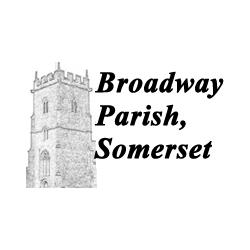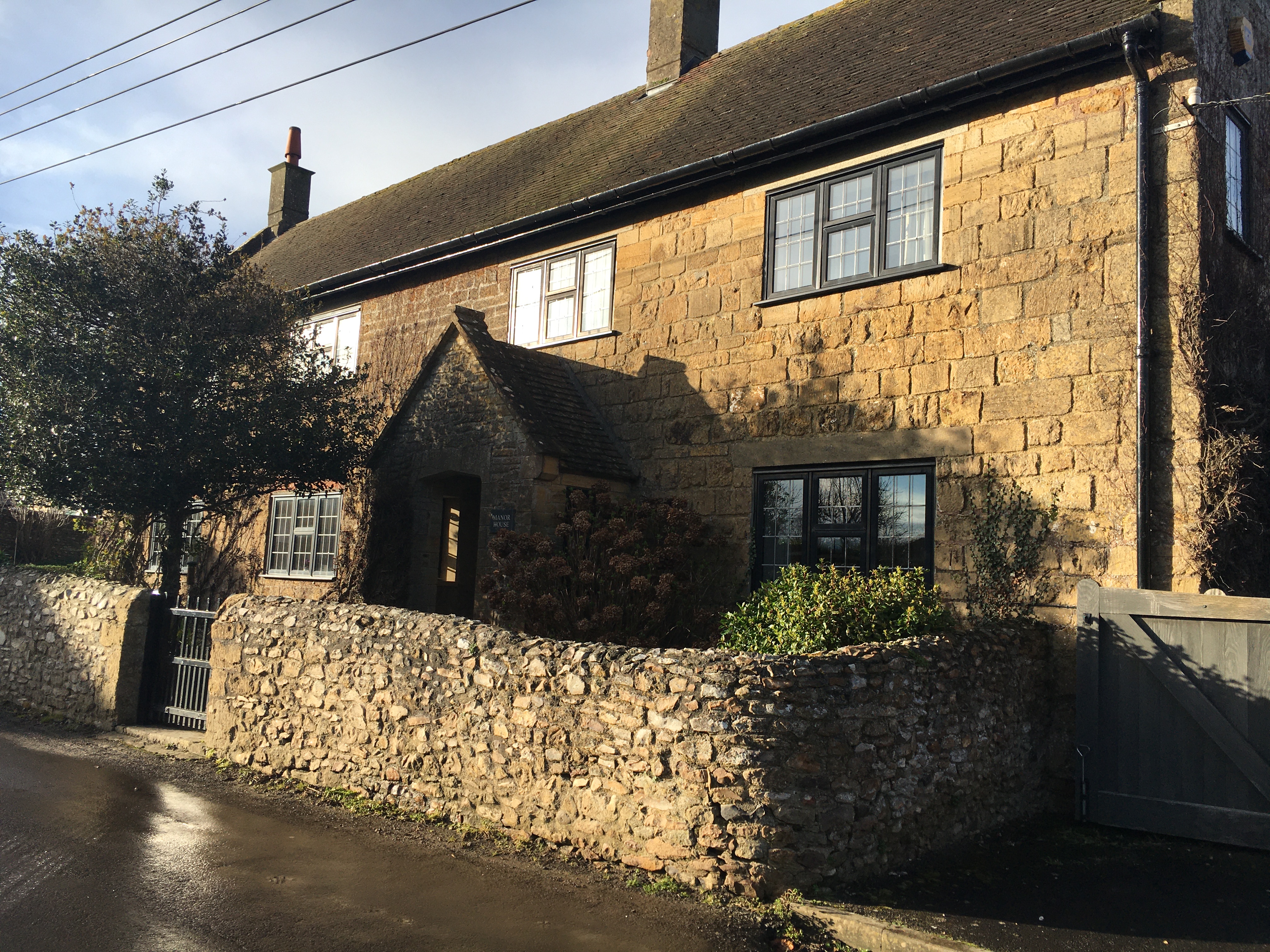A short history of Broadway
The village of Broadway has been a settlement since at least the 10th century.Small farms developed in the Anglo-Saxon period along the track cut through the extensive Neroche forest to the promontory on the Blackdown Hills known as Neroche castle,itself settled since Neolithic times. Its position along the track, or“broad way”,gave it its name, Bradewey. The 1086 Domesday Book describes the time of Edward the Confessor in 1066 as a manor with Alnod as its lord. Alnod may have died at the Battle of Hastings fighting for King Harold.Whatever Alnod’s fate, William the Conqueror gave the manor(and others in the area)to Count Robert of Mortain,his half-brother, as Tenant in Chief. The lord of the manor in 1086 was Mauger, a tenant of Count Robert and a Norman who also probably fought at Hastings.The village then had about 40 people, all servile to the lord of the manor and working his and their own fields. In extent, the manor would have cultivated no more than about 120 acres, possibly less.From the 12th century the ownership of the manor changed hands until, in the 15th century, it passed to the Portman family,who retained the lordship until the 1920s.
Over the centuries since the Conquest,Broadway’s farms expanded and multiplied along the track and wider afield, farmers taking advantage of the productive soil, access to the forest and the plentiful water supply from the river Ding and other local streams and springs. During this period the parish boundary extended from nearby Horton to Capland some distance to the north.The farms would have raised dairy cattle, sheep and pigs,used oxen and then horses in the fields,grown wheat, barley, beans and some flax and produced cider.The pastures would have been a mix of open fields and orchards.The village would have been self-sufficient for most of its needs, the records showing the presence over time of a variety of tradespeople, including a carpenter, cooper, blacksmith, stone mason and baker.Cottage industries also developed, including clothiers and glove makers.For centuries the village had its own market and fair, held in September on the feast of St. Aldhelm.
The 13th century church, dedicated to the Anglo-Saxon saints Aldhelm and Eadberga, sits in isolation to the east of the village. Aldhelm (c.639-709) was abbot of Malmesbury Abbey and later bishop of Sherborne and a revered west country saint. Eadburga (921/924-951/953) is most likely to be the daughter of King Edward the Elder,a nun at St.Mary’s abbey, Winchester, though her dedication may be more recent than Aldhelm’s. The church’s Anglo-Saxon dedication makes it likely that there was a chapel on the site prior to the Conquest.Why the church now stands alone is not clear. One explanation is that the village may have declined and subsequently relocated as a result of an outbreak of plague in the 14th century or later. Alternatively,it may be that the lord of the manor in the 13th century commissioned the building of the church near his manor house and did not wish to have his villagers living nearby.Either way,the village has for centuries developed where it is now, with the substantial farmhouses built from the 16th century onwards along the village’s main thoroughfare, Broadway Road, reflecting the earlier layout of the ancient village.
With the Reformation in the 16th century, Broadway seems to have become an increasingly dissenting village, with many of the leading farmers being non-conformists, though it was not until 1739 that the Congregational chapel was built in the centre of the village. There is no evidence that Broadway was directly affected by the Civil War, but at least one villager died at the Battle of Sedgemoor in 1685 supporting the Duke of Monmouth.
Charitable giving has been a feature of village life for centuries and found physical expression in the building of Every’s almshouses opposite the Bell Inn.Although the original bequest is of 1588, the executors did not fulfill their obligations under the will until early the next century. Since then, the attractive almshouses have been home to 7 local people.While some meagre help was available for families in distress through parish relief, a Friendly Society was set up in 1836 to assist in times of family sickness or bereavement, lasting for 100 years until the arrival of state old age pensions.
At the beginning of the 19th century, Broadway had 328 residents, the population rising to 570 by 1841 as a result of agricultural prosperity. Thereafter, however, the decline and mechanisation of agriculture, the need to find work elsewhere and changes to the parish boundary meant that the population fell, so that by 1901 it was only just over 300. Since then, it has grown to over 829 in 2021 as a result of natural increase and people moving in to work in the surrounding area. In the process, Broadway’s function, size and appearance have changed radically from a modest, largely self-sustaining farming community to a diverse, modern settlement looking outwards for employment and much of its services.
Even so, Broadway is fortunate in having a popular pub,the Bell Inn, on a site dating from c.1640, an excellent primary school and medical centre and a village hall built by the fund-raising efforts of the village itself.In 1894 local government at the parish level was reorganised and the village gained its own parish council.Made up of local people,the council is responsible for the newly redeveloped children’s play park, for representing the interests of the village in its relationship with Somerset Council and other statutory bodies and for the upkeep of public spaces in the village.
[This summary of the history of our village has been prepared by Peter Gregory with advice from Sid Painter]
March 2024






.JPG)